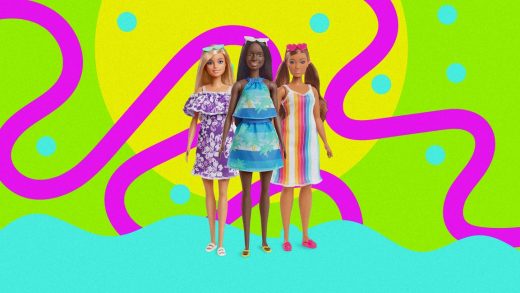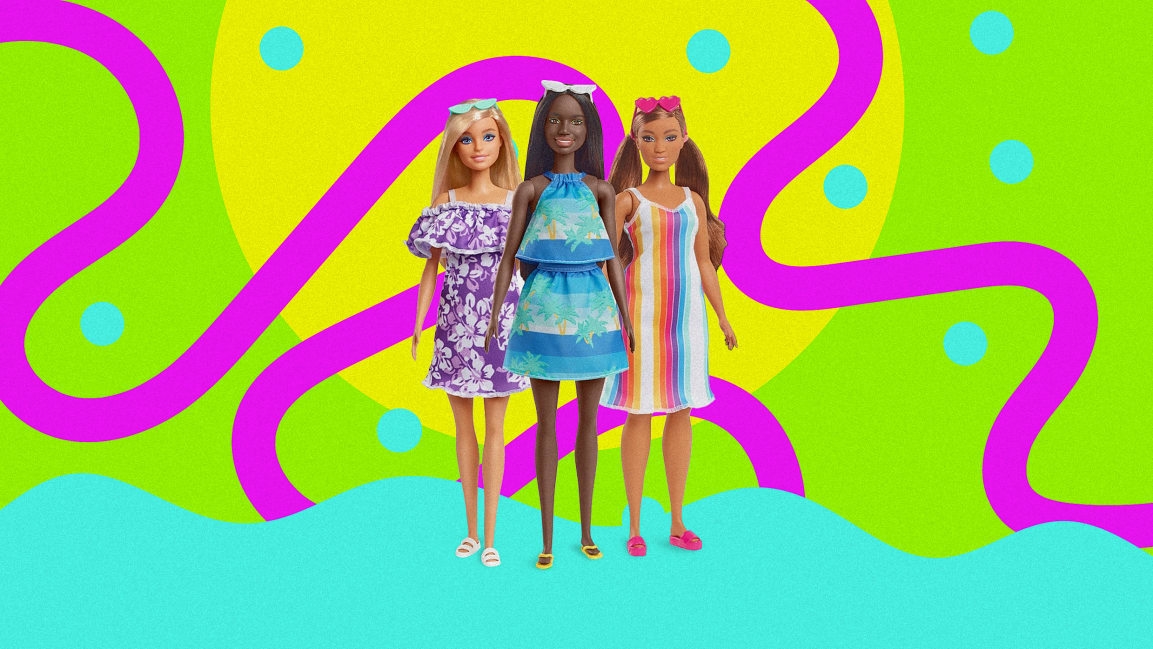Barbie gets a makeover—with recycled plastic
Barbie’s “Fashionista” line features dolls in 22 different skin tones, 94 hair colors, 13 eye colors, and five body types, as well as ones with wheelchairs and prosthetic legs. Despite the variety, which has been credited with Mattel selling more Barbies in 2020 than any time in the past 20 years, they all have one thing in common: They’re made of virgin plastic.
Now Mattel is starting to change that with a new collection called “Barbie Loves the Ocean.” The line of dolls is made with plastic that might’ve ended up in the ocean if it hadn’t been recycled. The Barbies use recycled plastic flakes Mattel is sourcing from U.S.-based company Envision Plastics, which is in turn sourcing raw materials from local collection points in the coastal region of Mexico’s Baja peninsula, in order to recover plastic before it even enters the ocean.
Available in stores and online, it includes three different dolls, three beach-themed play sets, and a doll and play set combo. Prices vary, but are comparable to Barbies made of virgin plastic. It also includes a partnership with the ocean cleanup organization 4ocean on a limited-edition, $20 4ocean x Barbie bracelet made with post-consumer recycled materials. For every bracelet sold, 4ocean will pull one pound of trash from oceans, rivers, and coastlines. And it’s all being hyped by a new ad campaign called “The Future of Green is Pink,” created with agency BBH Los Angeles, which depicts the material shift as the iconic doll’s latest makeover.
This move is part of a slow shift in the toy industry away from virgin plastic. Lego is replacing its clear plastic bags with recycled paper, with an aim to make all its packaging from renewable or recycled materials by 2025. It’s also working to develop bio-based bricks (though it has struggled to do so). In March, Hasbro announced it would be phasing out plastic packaging by the end of next year. And in 2019, Mattel pledged to use 100% recycled, recyclable, or bio-based plastic materials by 2030. According to a Mattel spokesperson, the company has launched Fisher-Price and Mega Bloks sets made from bio-based plastics, and the first fully recyclable Uno deck without cellophane packing materials. In April, the company unveiled Mattel PlayBack, a new toy take-back program to recover and reuse materials from old Mattel toys, including Barbie, to use in manufacturing future Mattel products.
But for now, the toy industry remains heavily dependent on plastic. An estimated 90% of the toys on the market are made of plastic. And as much as 80% of toys end up in landfills.
Barbie Loves the Ocean is the brand’s latest effort to position Barbie as a role model. “To show the next generation they can be anything, we must do our part in protecting the planet,” says Lisa McKnight, global head of Barbie and Dolls at Mattel.
The marketing push behind the new Barbie line also includes content like the popular Barbie vlogs (which gained widespread attention last October for its episode on racial allyship), with a new episode around how kids can be more environmentally friendly in their daily habits.
The collection has important symbolic value. After all, Barbie is an iconic toy that brought in more than $1.3 billion in sales last year. But as a way to reduce the brand’s environmental footprint, it barely makes a dent. It’s one collection amid at least 10 other collections that are still made with virgin plastic. At best, it’s a small step toward—as McKnight put it—the Barbie brand doing its part to protect the planet.
(109)



